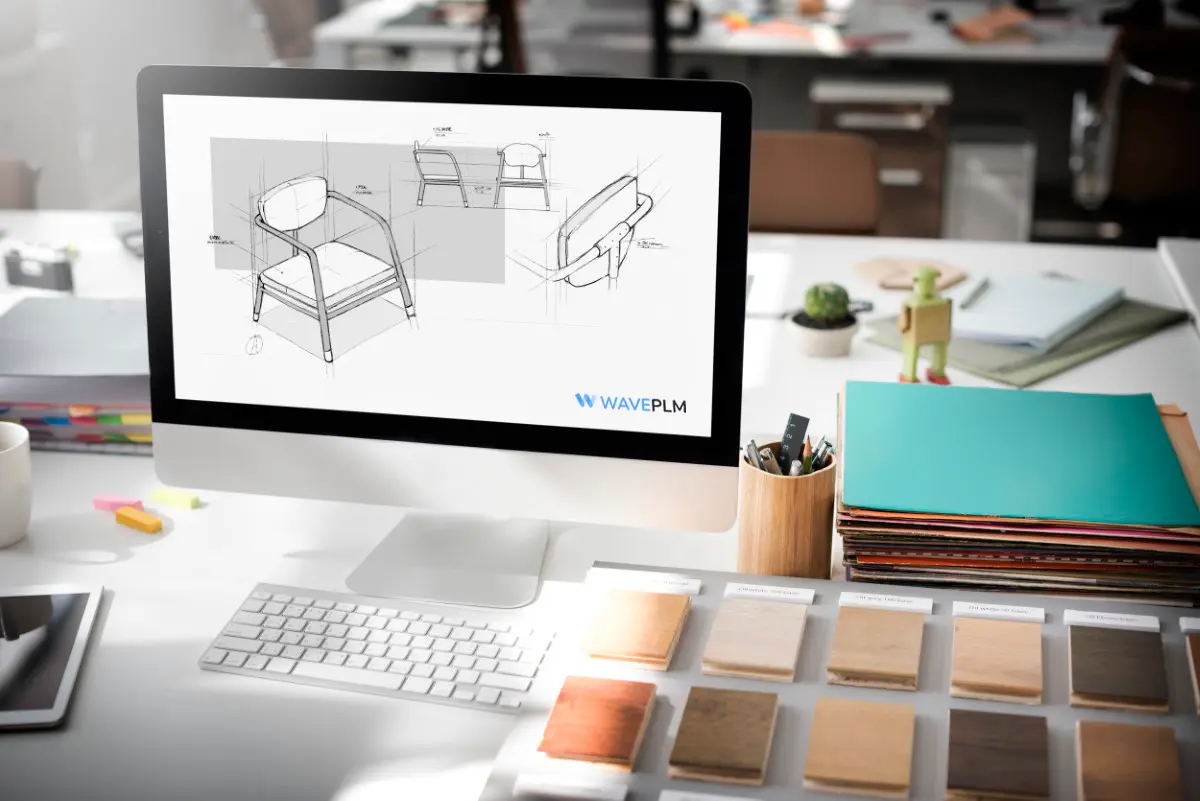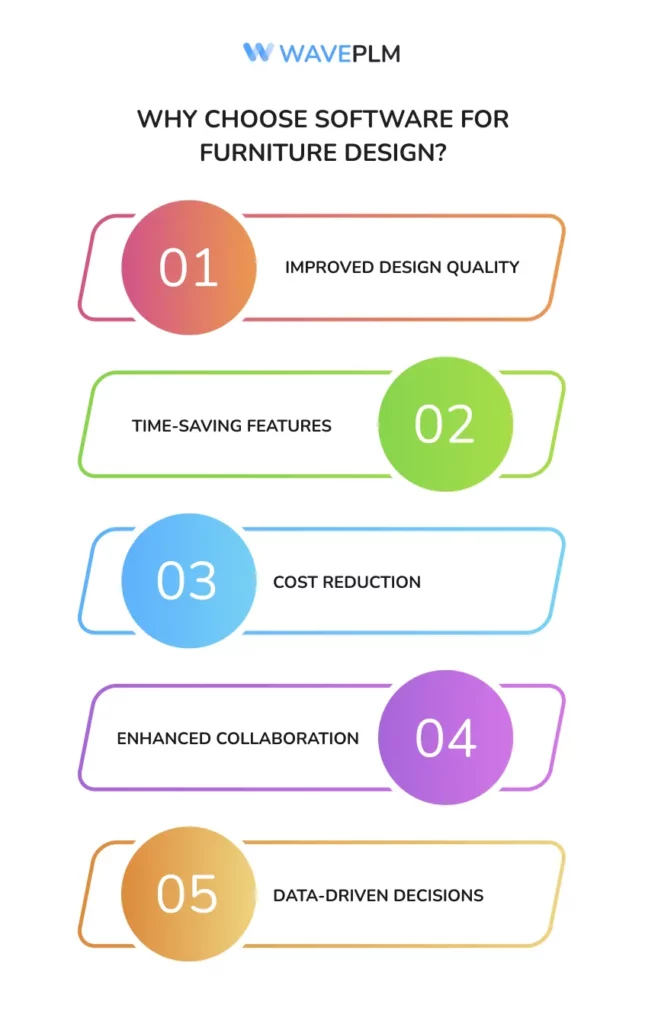
Furniture building software
The home décor industry is experiencing a digital transformation. Furniture building software and PLM (Product Lifecycle Management) software have become game-changers for designers and manufacturers. These innovative tools empower product designers, engineers, and interior designers to create stunning, functional furniture with ease.
These solutions are also widely used in architecture and engineering, supporting professionals in architectural design, building information modeling, and technical workflows for construction and manufacturing.
While digital tools are revolutionizing the industry, it’s important to recognize the foundational role of traditional craft in furniture making. Many modern solutions are inspired by the artistry and skill of craftsmanship, building upon these traditions to spark creativity and new design ideas.
The Role of Furniture Building Software in Home Décor
Furniture-building software simplifies the design process. It allows a designer to focus on designing and creating furniture, rather than being bogged down by technical barriers. With user-friendly interfaces, even those with minimal technical drawing experience can create professional-grade designs.
This software bridges the gap between creativity and functionality. It enables users to draw and sketch initial concepts directly within the platform, streamlining the transition from idea to detailed design. It allows designers to experiment with different materials and styles virtually. Home material decor can be visualized and adjusted instantly, saving time and reducing costs.
Enhancing Design Innovation with 3D Modeling
The design process often starts with sketches and sketching, which capture initial concepts and shapes before being developed into detailed 3D models.
3D modeling is at the heart of modern furniture design. Furniture building software uses advanced 3D design tools to bring concepts to life. Designers can create realistic prototypes of home decor furnishing, refine their designs, and make necessary adjustments before production. These digital models are created from initial sketches and serve as the foundation for further development.
These tools also support collaboration. Digital models are created collaboratively, allowing designers and engineers to refine and iterate on designs efficiently while sharing their progress in real-time. This streamlines the design process and fosters innovation, as teams can quickly adapt to new ideas or feedback.
How PLM Software Complements Furniture Building Software
While furniture building software focuses on design, PLM software manages the entire product lifecycle. From initial concept to final production, PLM ensures every stage runs smoothly. This integration boosts efficiency and helps businesses stay competitive in the fast-paced home décor industry.
PLM software offers features such as version control, workflow management, data tracking, and an import feature that allows teams to bring in external files and data for seamless integration. These features ensure teams stay aligned, deadlines are met, and design revisions are documented. Combining PLM with furniture software creates a seamless process from design to delivery.
User-Friendly Tools for All Skill Levels
Both furniture building and PLM software are designed to be user-friendly. They are frequently used by both experienced product designers and beginners. Intuitive interfaces and guided tutorials make these tools accessible to everyone.
Many platforms offer free trials, often available directly through the software provider’s website, allowing users to explore their features before committing. This is particularly useful for small businesses or independent designers who want to test the software without upfront costs.
Transforming the Design Process with 3D Environments
Working in a 3D environment offers significant advantages. Designers can visualize how their furniture will look in real-world settings. This helps interior designers match pieces with specific home décor styles. 3D environments also support easy customization of furniture designs, allowing for personalized solutions that meet specific client needs.
Additionally, 3D environments support detailed technical drawings. These drawings are essential for manufacturers, ensuring accurate production and reducing errors. The software automatically updates technical drawings and material lists in response to design changes, ensuring accuracy throughout the process. The ability to transition from creative design to production-ready specifications makes furniture building software indispensable.
PLM software further enhances this process by managing design revisions and ensuring the latest specifications are always available. This reduces miscommunication and ensures consistency across teams.
Boosting Efficiency and Reducing Costs
Furniture building and PLM software are widely adopted across the industry for various applications, including cabinetry and hardware integration. These tools enhance efficiency throughout the design and manufacturing process. Virtual prototypes help designers identify potential issues early. This reduces the need for physical prototypes, cutting costs and saving time.
Manufacturers also benefit from these tools. The software helps ensure accurate specifications for hardware and cabinetry, reducing production errors and material waste. Clear and precise designs minimize production errors and material waste. PLM software ensures every stakeholder has access to accurate, up-to-date information, further reducing costly mistakes.
Supporting Collaboration Between Designers and Engineers
Effective collaboration between designers and engineers is crucial in furniture design. Furniture building software facilitates this by providing a shared platform. Teams can work on the same project, make updates in real time, and ensure everyone stays aligned. The software supports collaboration on engineering tasks, such as designing cabinets with precise technical requirements, allowing both designers and engineers to contribute to detailed and accurate models.
PLM software takes this a step further by integrating design, production, and supply chain data. This ensures that all teams—from design to logistics—work towards the same goals. The result is a faster, more efficient workflow that delivers high-quality products on time.
Fabrication and Manufacturing: Bridging Digital Design and Real-World Production
Turning a creative idea into a finished piece of furniture requires more than just inspiration—it demands precision, planning, and the right technology. Furniture design software is the essential link between digital creativity and real-world craftsmanship, empowering furniture designers to move seamlessly from concept to production.
With advanced CAD software and parametric modeling tools, designers can create detailed plans and 3D models that capture every nuance of their vision. These features make it easy to design complex shapes and custom furniture, adjusting dimensions and details in real time to meet specific needs. For woodworking projects, woodworking CAD capabilities allow for intricate joinery and unique forms that would be difficult to achieve by hand.
When it comes to manufacturing, furniture design software streamlines the entire process. By exporting designs as DXF files or other standard formats, designers can generate precise cutting patterns for CNC machining. This ensures that every component is crafted with accuracy, reducing errors and enhancing the quality of the final product. The ability to generate material lists and cut lists directly from the software also helps save time and minimize material waste, as designers know exactly what materials are needed before production begins.
Many furniture design software solutions offer an extensive library of pre-made components and furniture designs, making it easy to explore new ideas or quickly assemble custom pieces. Advanced features such as rendering and simulation allow designers to visualize how their creations will look and function in real life, further refining the design before any materials are cut.
For those just starting out, a free version or trial period can be a valuable way to explore the software’s functionality and see how it fits into your workflow. While some programs offer a user-friendly interface ideal for beginners, others provide advanced features for professionals tackling complex projects. It’s important to consider the learning curve, available support, and compatibility with various file formats when choosing the right tool for your needs.
Ultimately, furniture design software enhances every stage of the design and manufacturing process. Whether you’re crafting a one-of-a-kind piece or managing large-scale production, these tools help you create, refine, and bring your furniture designs to life with efficiency and confidence. By leveraging the latest technology, designers and manufacturers can push the boundaries of what’s possible in furniture design—turning digital ideas into tangible works of art.
Why Choose Software for Furniture Design?
Investing in furniture and PLM software offers numerous benefits, as it supports a variety of materials, including wood, and enables designers to shape their creations with accuracy:
- Improved design quality: Advanced tools ensure accurate and visually appealing designs, allowing users to achieve precise shapes and work effectively with materials like wood.
- Time-saving features: Streamlined workflows speed up the entire design process.
- Cost reduction: Fewer prototypes and minimized errors lead to significant savings.
- Enhanced collaboration: Integrated platforms keep teams aligned and efficient.
- Data-driven decisions: PLM software provides insights that optimize production and reduce waste.

Why Choose Furniture Design Software
A Free Trial to Get Started
For those new to these tools, a free trial is the perfect starting point. It allows users to explore features like 3D design, technical drawing, and lifecycle management. This hands-on experience helps designers and manufacturers understand how the software can transform their projects.
Many platforms, including Wave PLM, offer comprehensive support during the trial period, ensuring users maximize the software’s potential.
Conclusion
Furniture building software and PLM software are revolutionizing the home décor industry. Together, they empower designers and manufacturers to innovate, collaborate, and deliver high-quality furniture efficiently. With user-friendly tools, 3D modelling capabilities, and comprehensive lifecycle management, these technologies are essential for staying competitive. Explore a free trial today and take the first step towards design innovation.




